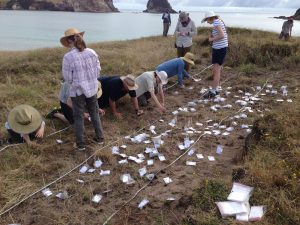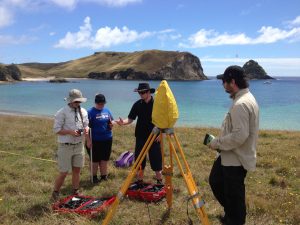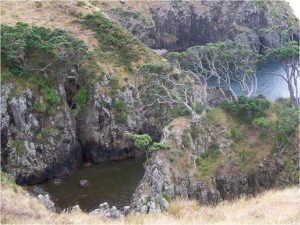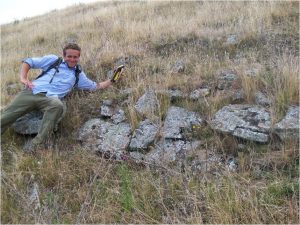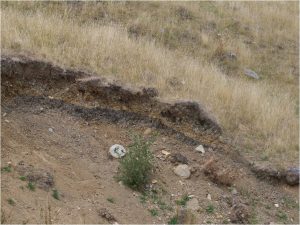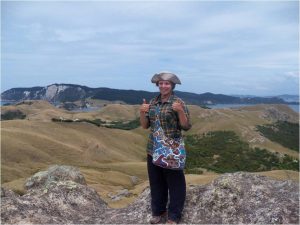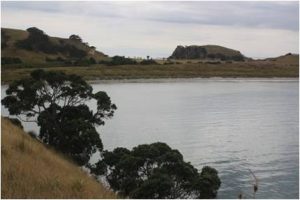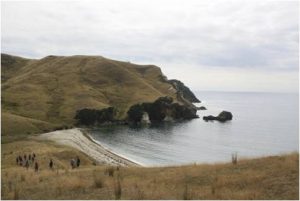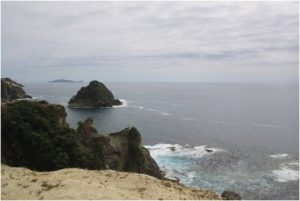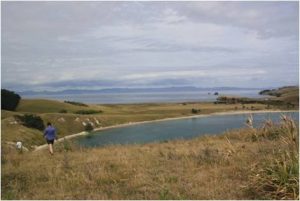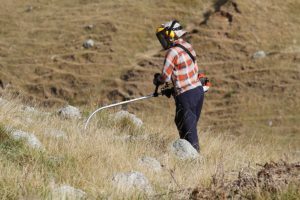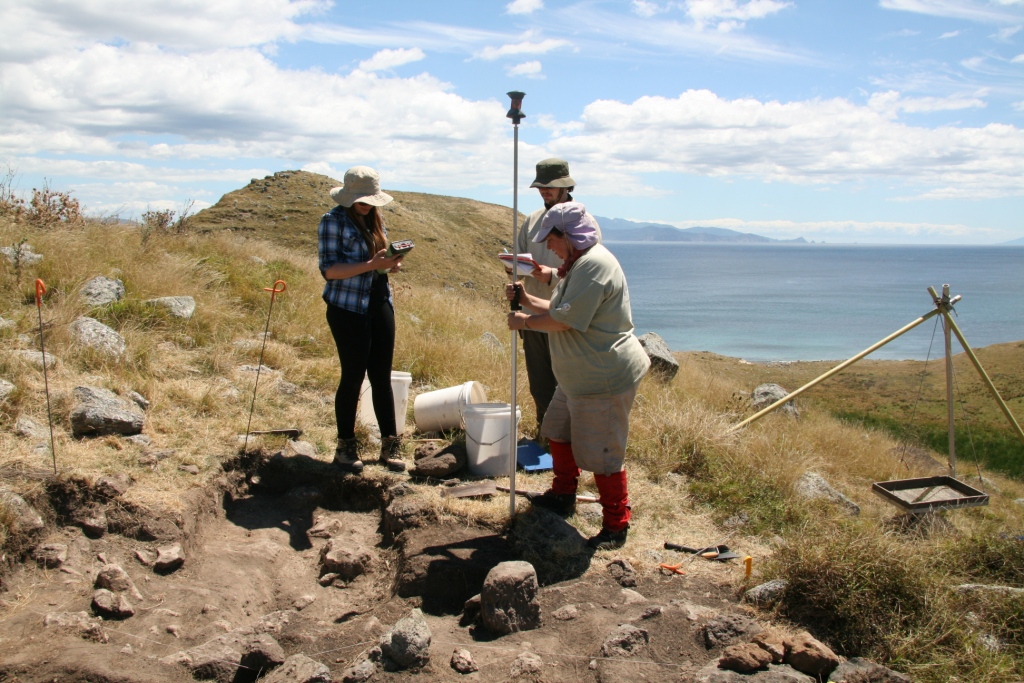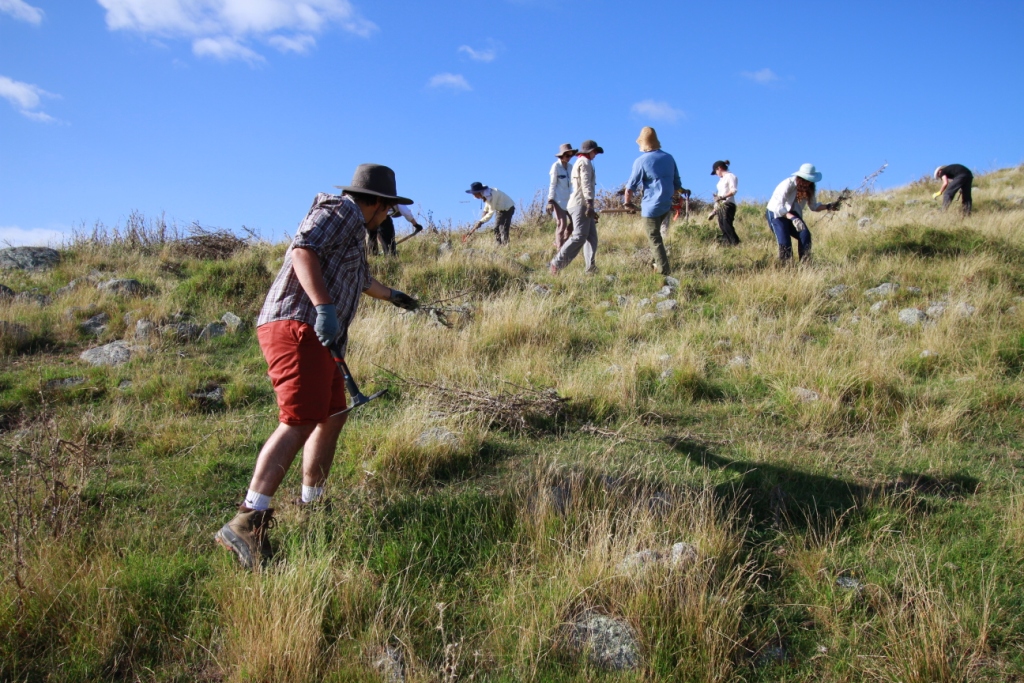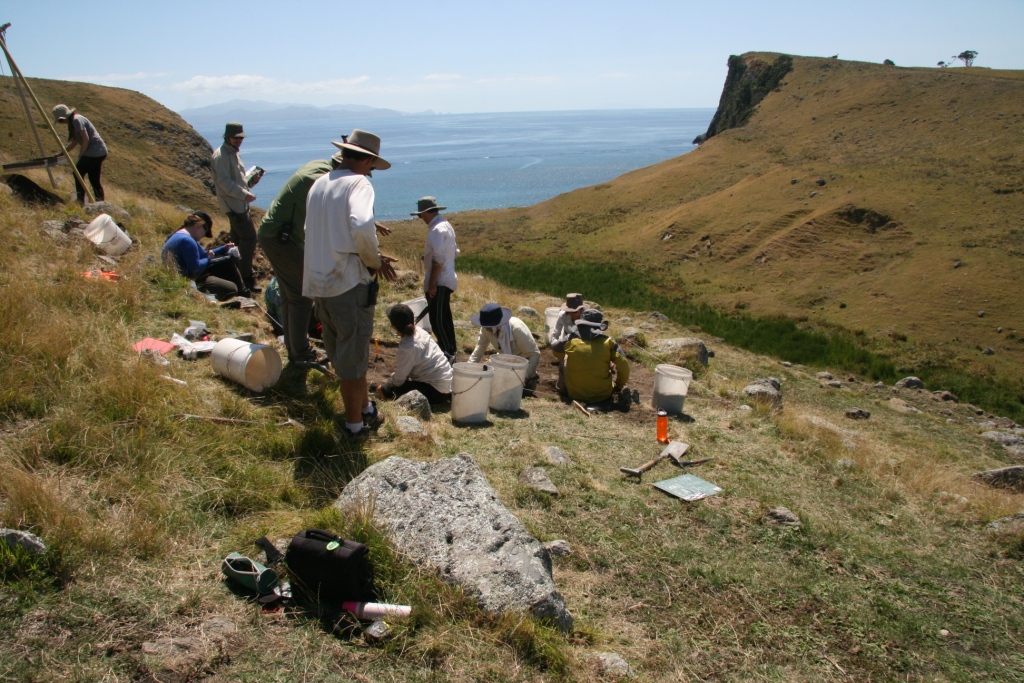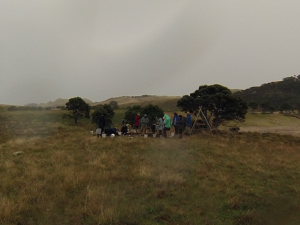 We began the day with a sleep in however short it may have been and reported for breakfast at 6.45am. By 7.30 am, Richard was still tired and complaining but we managed to depart on time for the field. Today, Kelly and Richard were stationed in EA64, continuing excavations on the main trench. Richard worked on an area in the south-west corner of the trench and managed to find obsidian flakes, shell fragments and ochre. Sieving of the excavated material revealed sheep poo, roots, and some smaller obsidian flakes. Kelly worked in the north-east corner, spending most of the day finding nothing until a rock revealed itself to be part of circular rock feature, which due to the abundance of charcoal in the centre indicates it may have been a fire feature. Zac found some potential post holes and half sectioning authenticated that Richard was out of his depth, but Zac was onto it. Richard’s troweling technique needed some serious work and he cried while our senior tribal chiefs made an example of his poor method. Luckily, there are ten more days for him to perfect the technique. Using her magical powers of archaeology and deduction, Louise observed a depression in the north-west corner and the excavation area was extended by 1m by Logan. Yet again, he found not a lot and is on the brink of being shunned from our island society (“the tribe has spoken”). Louise herself began excavating the eroding sand dune to the north of the excavation area which we collected all the surface artefacts on day 1. Some interesting artefacts were found including a potential hangi (earth oven) and further excavation work is planned for the coming days. Sarah and Rosa joined Josh for their first day of surveying using the Total Station aka the Wizard Stick. We also surveyed some existing rock formations in the area surrounding the excavation site but for the most part, we shot in new deposit layers and artefacts located by the excavation team. The rain hit mid-afternoon leaving Richard feeling wet and Kelly looking like she had spent a week in a coalmine. Yet again, Richard cried. We continued working in the rain with puddles in shoes and tears in our eyes, yearning for dry clothes and hot drinks. However, Kelly went swimming in the rain and Richard just wanted someone to hug him. After showering/swimming/hugs, Kelly and Richard processed the day’s excavation photos and deposit forms from Day 1. Sarah looked at the data with Josh that was surveyed throughout the day with the total station. The smell of shepherd’s pie and plum crumble temporarily distracted us from our tasks and we’re all grateful for a hot meal tonight as the rain continues. Tomorrow, we look forward to more excavation and surveying and hope that this is the last of the rain.
We began the day with a sleep in however short it may have been and reported for breakfast at 6.45am. By 7.30 am, Richard was still tired and complaining but we managed to depart on time for the field. Today, Kelly and Richard were stationed in EA64, continuing excavations on the main trench. Richard worked on an area in the south-west corner of the trench and managed to find obsidian flakes, shell fragments and ochre. Sieving of the excavated material revealed sheep poo, roots, and some smaller obsidian flakes. Kelly worked in the north-east corner, spending most of the day finding nothing until a rock revealed itself to be part of circular rock feature, which due to the abundance of charcoal in the centre indicates it may have been a fire feature. Zac found some potential post holes and half sectioning authenticated that Richard was out of his depth, but Zac was onto it. Richard’s troweling technique needed some serious work and he cried while our senior tribal chiefs made an example of his poor method. Luckily, there are ten more days for him to perfect the technique. Using her magical powers of archaeology and deduction, Louise observed a depression in the north-west corner and the excavation area was extended by 1m by Logan. Yet again, he found not a lot and is on the brink of being shunned from our island society (“the tribe has spoken”). Louise herself began excavating the eroding sand dune to the north of the excavation area which we collected all the surface artefacts on day 1. Some interesting artefacts were found including a potential hangi (earth oven) and further excavation work is planned for the coming days. Sarah and Rosa joined Josh for their first day of surveying using the Total Station aka the Wizard Stick. We also surveyed some existing rock formations in the area surrounding the excavation site but for the most part, we shot in new deposit layers and artefacts located by the excavation team. The rain hit mid-afternoon leaving Richard feeling wet and Kelly looking like she had spent a week in a coalmine. Yet again, Richard cried. We continued working in the rain with puddles in shoes and tears in our eyes, yearning for dry clothes and hot drinks. However, Kelly went swimming in the rain and Richard just wanted someone to hug him. After showering/swimming/hugs, Kelly and Richard processed the day’s excavation photos and deposit forms from Day 1. Sarah looked at the data with Josh that was surveyed throughout the day with the total station. The smell of shepherd’s pie and plum crumble temporarily distracted us from our tasks and we’re all grateful for a hot meal tonight as the rain continues. Tomorrow, we look forward to more excavation and surveying and hope that this is the last of the rain.
XOXO
Richard, Kelly and Sarah

